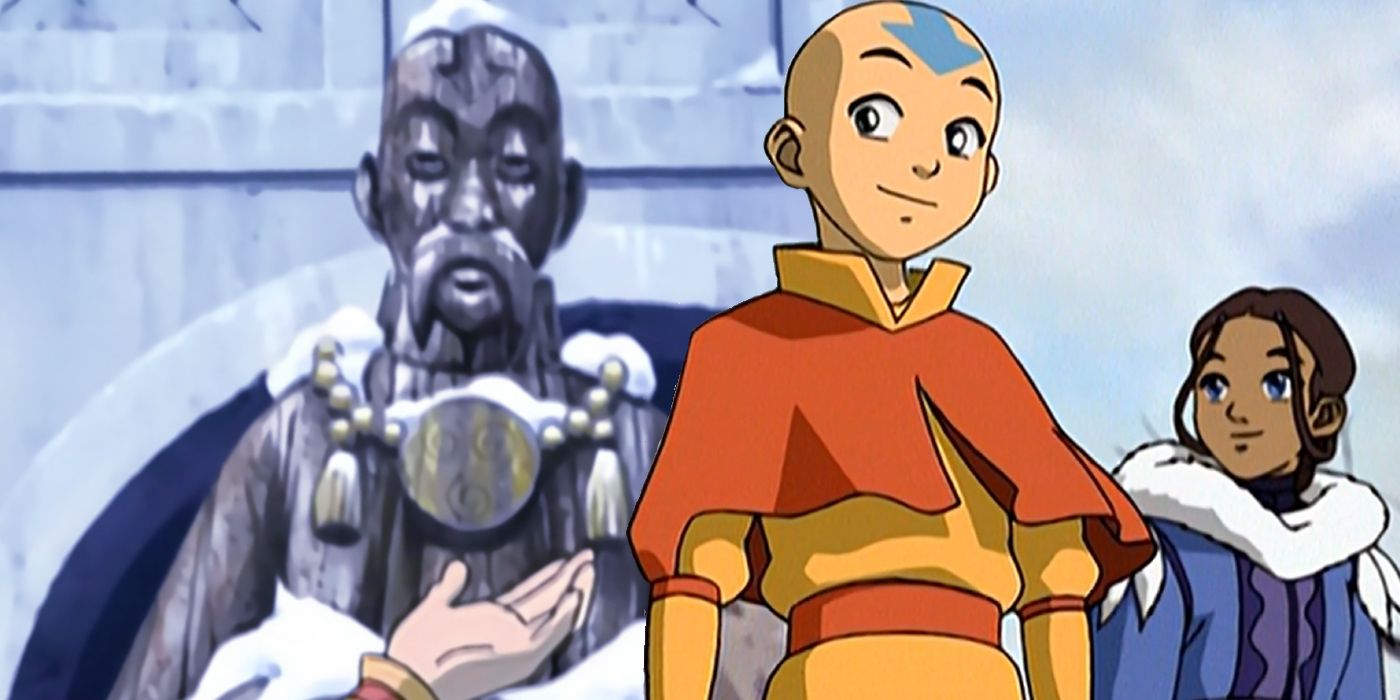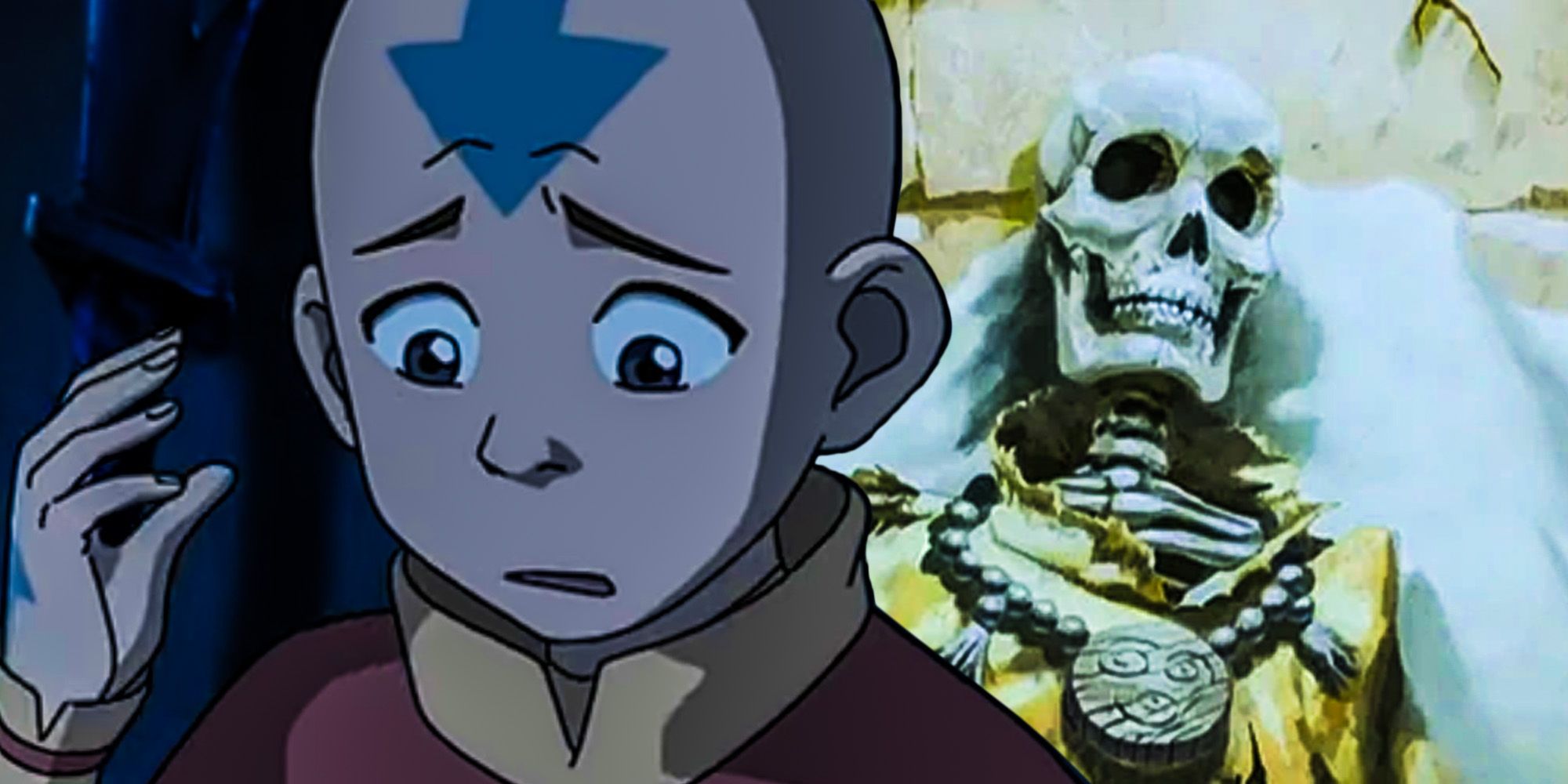Avatar: The Last Airbender Secretly Revealed That Aang Was Lied To

Much like the rest of the Air Nomads seen in Avatar: The Last Airbender, Avatar Aang is taught from a young age that violence is never the answer to anything; however, it seems that his monk masters may have left out a few details in that regard. Within the universe of The Last Airbender, the Air Nomads are seen as paragons of peace and harmony throughout the world. Their monastic culture and way of life are passed down to future generations, with one major teaching being a code of non-violence, which Avatar Aang successfully manages to uphold during the course of the series despite the dire circumstances that he faces. Although, as seen very early in The Last Airbender season 1, there are some aspects of the Airbenders' pacifist code that Aang has not been told about.
During the events of The Last Airbender, Aang shows time and time again that he can defeat an opponent without throwing a single punch, preferring to rely on his reflexes and intelligence to subdue his foes and only resorting to violence when he needs to defend himself. This behavior stems from the fact that his teachers have taught him that all life is sacred, no matter how big or small the creature or person, and that his peaceful ideals will allow him to achieve spiritual enlightenment similar to his mentors. This mindset allows Aang to develop an alternative solution for ending the Hundred Year War, a solution that does not involve shedding the blood of Fire Lord Ozai. While that is all well and good, it is revealed close to the very beginning of the series that the code of the Air Nomads has a darker side to it.
In Avatar: The Last Airbender, season 1, episode 3, "The Southern Air Temple," Aang, Katara, and Sokka visit Aang's childhood home, where they, unfortunately, discover a bit more than they wanted. While exploring the abandoned ruins of the temple, they find the remains of Aang's former guardian and mentor, Monk Gyatso, which leads the young Avatar to realize that he is the last of his kind. However, Monk Gyatso's skeleton is not the only thing the kids find. In the same room, they see a litany of other skeletons wearing military armor belonging to the Fire Nation. Just with this one image alone, they are able to piece together the events that took place, as well as the underlying truth behind the Air Nomads' non-violence rule. To put it simply, Aang has seemingly been lied to, proving that violence is sometimes necessary.

At the start of the Hundred Year War, Fire Lord Sozin utilizes the newly discovered Sozin's Comet and its passing to initiate his plan of world domination. As the Comet heightens a firebender's abilities many times over, the Fire Nation military makes quick work in their first assaults. Sozin deliberately targets the Air Temples and slaughters their people to prevent the rise of the next Avatar, who is set to come from the Air Nomads. At the Southern Air Temple, many airbenders, Monk Gyatso included, are begrudgingly forced to forgo their non-violent ideals for their own survival, thus using their powerful airbending to fight off their enemies. The scene of Gyatso's remains shows that he not only used his bending offensively but also used it to take the lives of his assailants.
The means of how Gyatso ended his foes is a frequent topic of debate, but the fact of the matter is that, despite the Monks' ideals, desperate times really do call for desperate measures. While Aang tries to find ways to end all of his confrontations more peacefully, the monks leave out the part that, sometimes, direct violence and even killing are unavoidable in certain situations. Adding more adult themes and details like this further deepen the already complex storytelling of Avatar: The Last Airbender, which only makes it that much better. Though this scene may be a bit dark, its presentation is still incredibly well done and starts the series off strong.
Source: Screenrant
Post a Comment